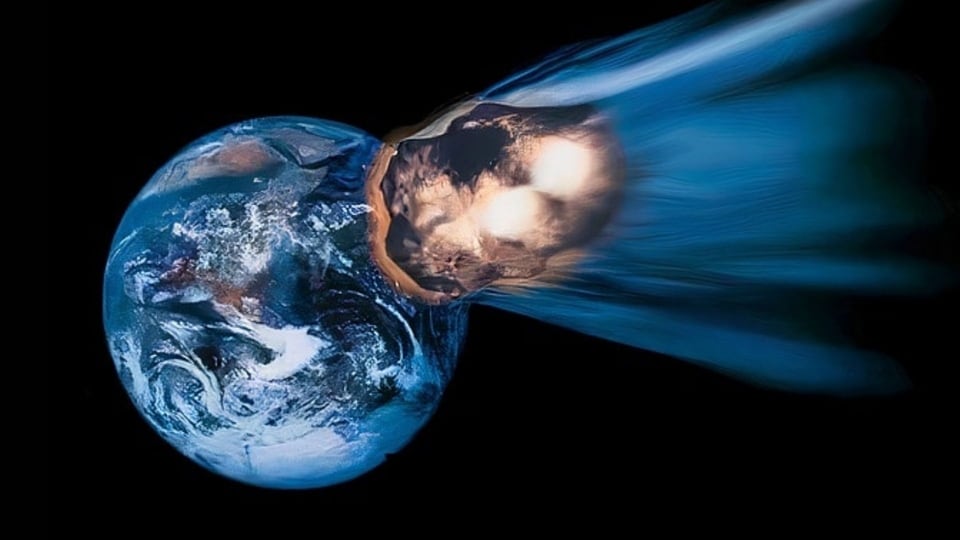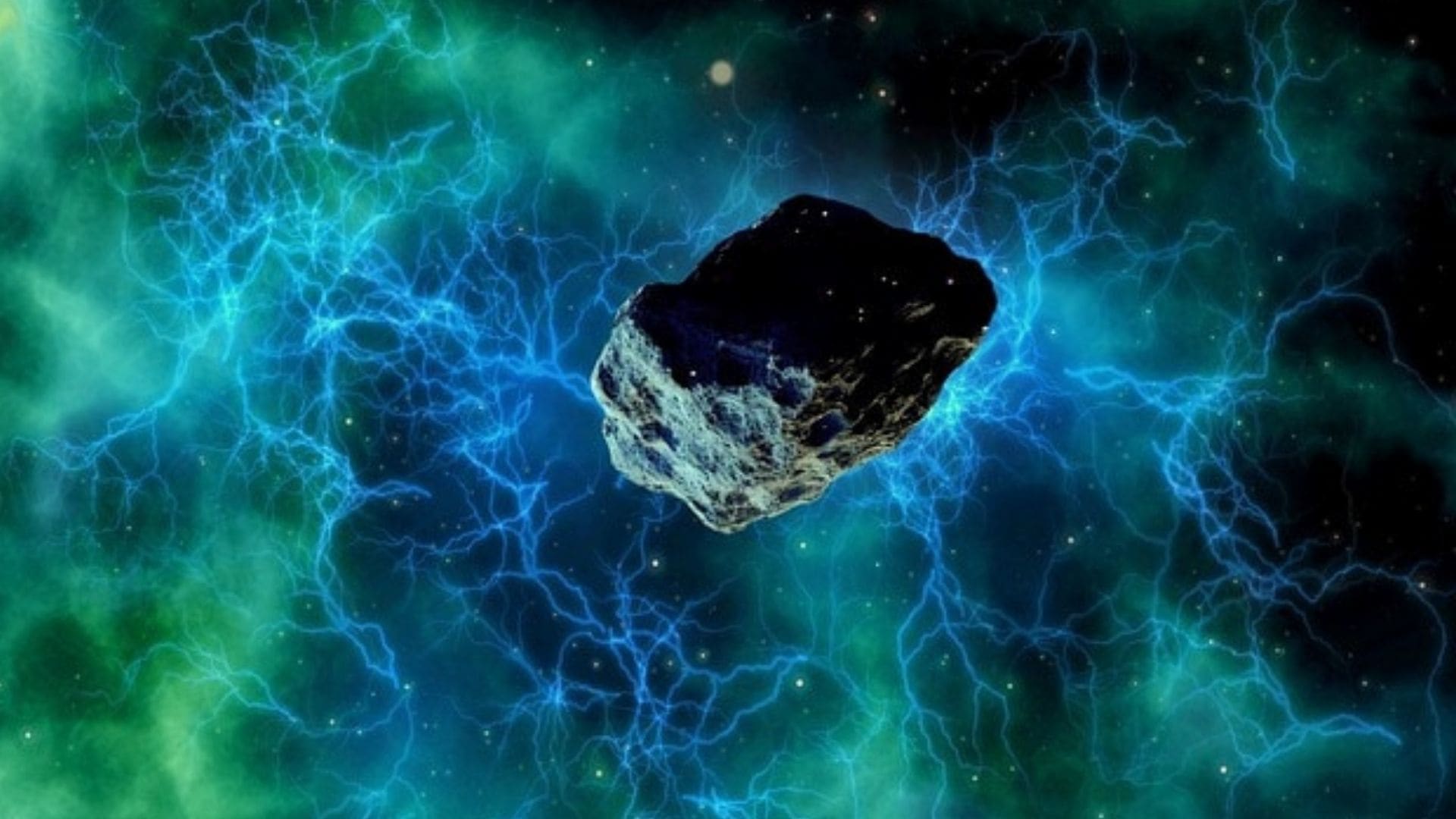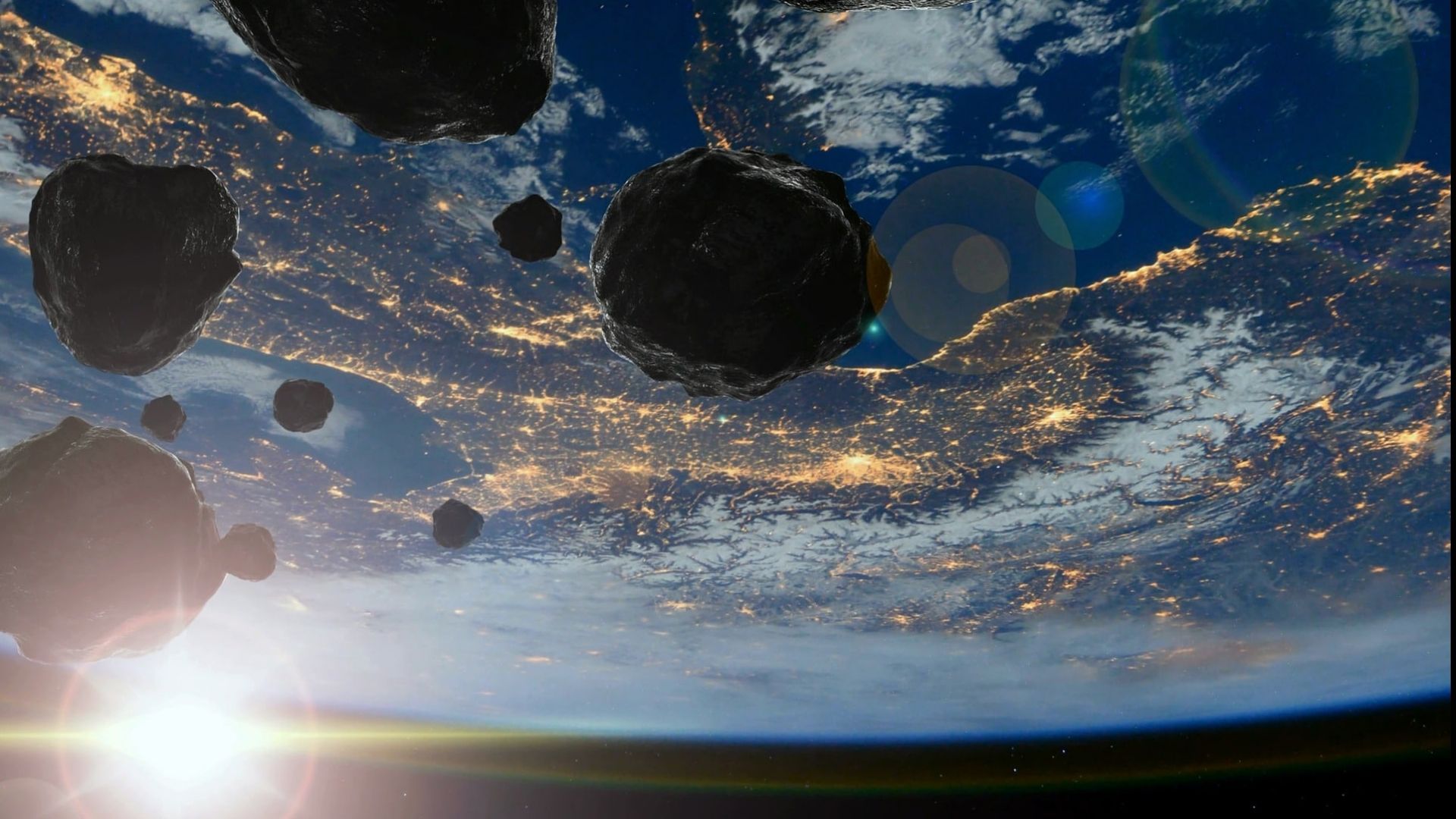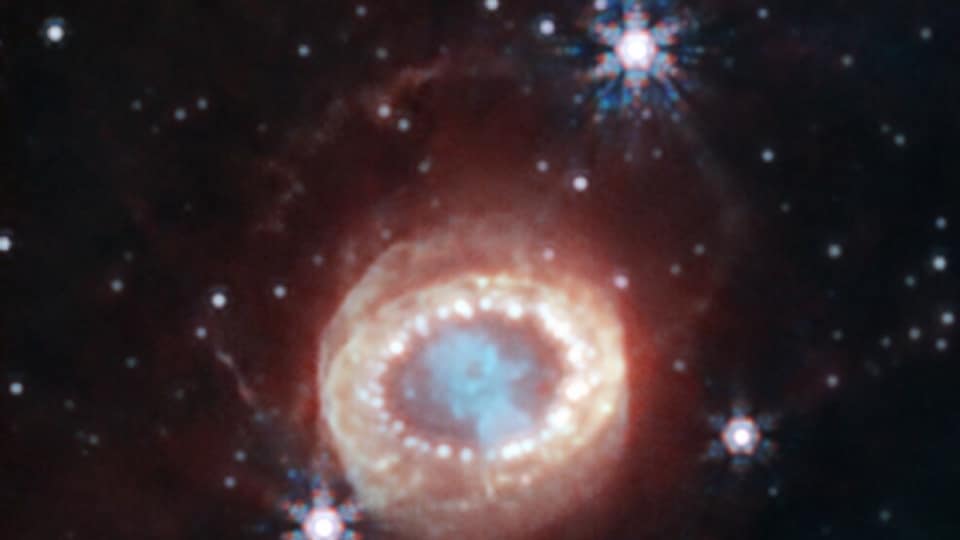NASA's James Webb Telescope reveals a sight to behold - a Supernova remnant
NASA's James Webb Space Telescope has snapped SN 1987A, a supernova remnant, some 168,000 light-years away. Webb Telescope's NIRCam reveals a dense keyhole, an equatorial ring, and crescent shapes from the explosion.






 View all Images
View all ImagesNASA's James Webb Space Telescope has imaged the SN 1987A, a distant supernova remnant in the Large Magellanic Cloud, 168,000 light-years away. Webb Telescope's NIRCam has uncovered intricate structures, outshining prior observations. With international collaboration from NASA, ESA, and the Canadian Space Agency, Webb aims to unravel cosmic mysteries using high-resolution imagery. Check out the highlights below:
1. SN 1987A, discovered in 1987, has been a subject of intensive research spanning nearly four decades, examined across various wavelengths from gamma rays to radio waves.
2. The James Webb Space Telescope's Near-Infrared Camera (NIRCam) has recently provided valuable insights into the evolution of supernovae and their remnants.
3. A notable discovery is a dense, keyhole-shaped central structure filled with gas and dust ejected during the supernova explosion, impervious even to near-infrared light.
4. Surrounding the central keyhole is a luminous equatorial ring, composed of material expelled tens of thousands of years before the supernova's explosion, marked by bright hot spots where the shockwave has interacted with it.
5. Webb's high-resolution images surpass the capabilities of previous telescopes like Hubble Space Telescope, Spitzer Telescope, and Chandra X-Ray Telescope, offering unprecedented clarity and detail.
6. Despite decades of study, many mysteries persist, especially regarding the expected formation of a neutron star following the supernova.
7. Webb will continue its observations of SN 1987A, utilizing its Near-Infrared Spectrograph (NIRSpec) and Mid-Infrared Instrument (MIRI) to gather high-fidelity infrared data, enhancing our comprehension of the recently discovered crescent structures.
8. The James Webb Space Telescope is a leading space science observatory with global collaboration, including NASA, ESA (European Space Agency), and the Canadian Space Agency, and it will collaborate with other observatories to uncover further secrets of SN 1987A.
9. This telescope explores enigmas within our solar system, studies remote exoplanets, and delves into the origins and structures of the universe.
In summary, Webb's groundbreaking observations of SN 1987A have opened new avenues for scientific inquiry, offering unprecedented insights into the aftermath of supernovae and the evolution of celestial remnants.
Catch all the Latest Tech News, Mobile News, Laptop News, Gaming news, Wearables News , How To News, also keep up with us on Whatsapp channel,Twitter, Facebook, Google News, and Instagram. For our latest videos, subscribe to our YouTube channel.
































